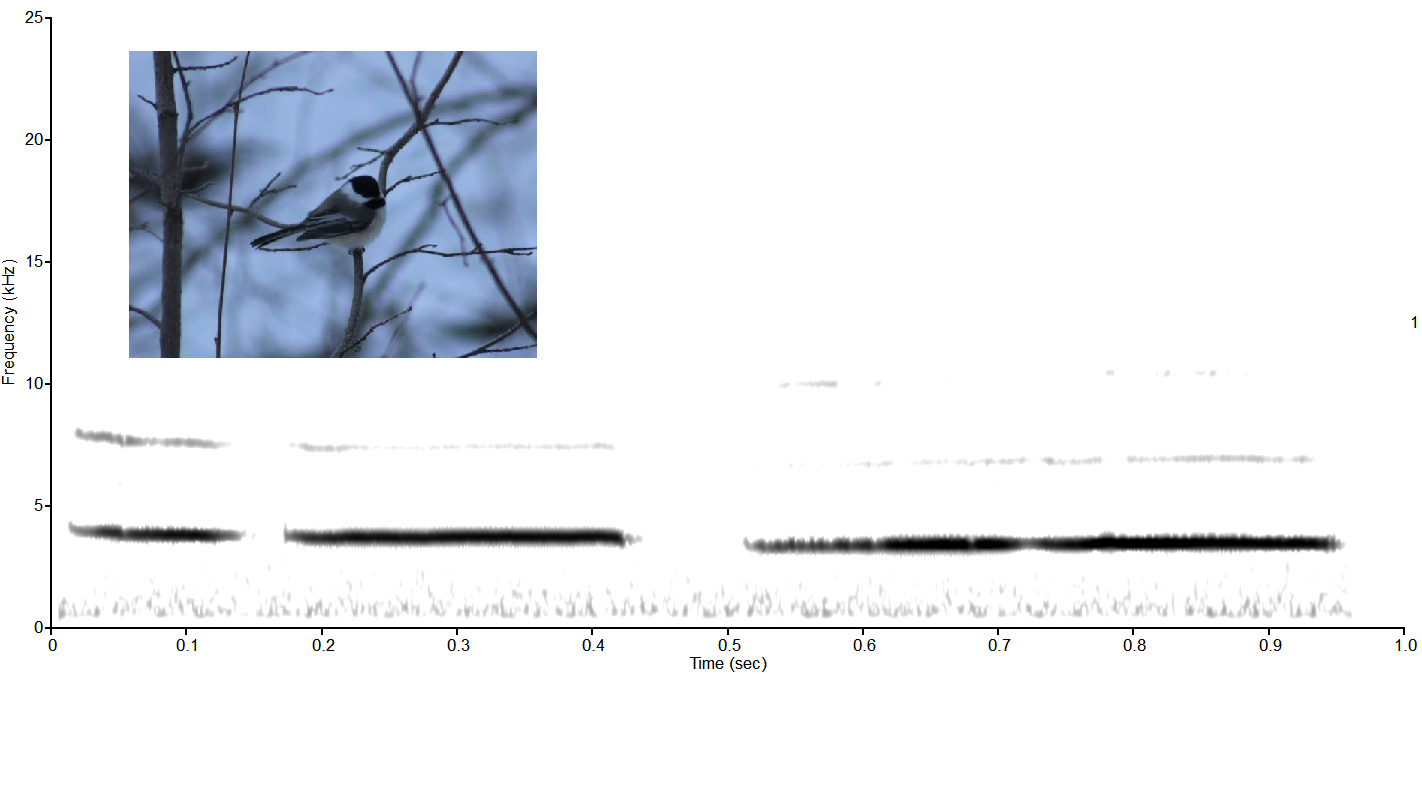By Carolina (Kina) Montenegro
Linked paper: Black-capped Chickadees (Poecile atricapillus) can identify individual females by their fee-bee songs by C. Montenegro, W.D. Service, E.N. Scully, S.K. Mischler, K.A. Campbell, and C.B. Sturdy, The Auk: Ornithological Advances.
Bird song has long been considered a sexually selected signal, used predominantly by male songbirds for territorial defense and mate attraction. However, reports and studies of female song are ever-increasing, and scientists have finally recognized that in many species both males and females can and do produce song. The historical misconception surrounding female song stems from the fact that the majority of past studies focused on migratory songbirds from the northern hemisphere, and within such migratory songbird species, female song is less common. Ornithologists have described female song as a hormonal aberration and a by-product of the sexual selection of male song with no function, but we are now finding that this is most likely not the case. Along with other laboratories, the Songbird Neuroethology Laboratory (SNL) has been investigating the production and function of female song, with a focus on Black-capped Chickadees.
A recent study found that female song was present in 71% of the 323 songbird species surveyed. This is not to say that females of the remaining 29% species do not sing — only that females in these species have not been documented singing. A review of past studies focused on female song suggested that females use songs similarly to males, in situations of territorial defense against females and males of the same species, mate defense against infidelity, mate attraction, and to coordinate breeding activities.
While observations and studies of female song in Black-capped Chickadees are very sparse, female Black-capped Chickadee song seems to serve a similar purpose to male song. Early observations of breeding pairs indicate that while males produce the fee-bee song more often than females, both sexes produce the song to protect territories during the spring. Another study from SNL found that female song may serve a function in helping males recognize their mates. In order to be used for mate recognition, the fee-bee song would need to be unique enough to identify an individual. A recent study from SNL found that Black-capped Chickadees are able to identify the sex of an individual using different acoustic features within a song, and we can imagine that being able to determine the sex of an individual via song is beneficial in distinguishing between mate and non-mate, or friend or foe, whether conspecific, heterospecific, or a predator. So we took our investigation of individual identification one step further.
We tested whether female and male chickadees can tell female chickadees apart just by listening to their individual fee-bee songs. We designed a study in which we trained the birds to respond to the songs of some individual females but not others. We then tested whether the birds could pick out never-before-heard songs from the birds they were previously trained to respond to, while ignoring songs from other female birds.
Our analysis indicates that male and female chickadees can indeed distinguish between females by listening to their song, and can do so using the whole song or only part of the song. The ability to distinguish song by sex as well as by the individual female suggests that female song does serve an essential function in Black-capped Chickadees.
Future studies could explore how female chickadees learn their song. Songbirds are one of few groups of species that are vocal learners, meaning that they learn their song from a tutor. Currently, it is unknown if female chickadees learn their song as juveniles or adults, or if it happens before or after dispersing from the area where they were born. Overall, studies could focus on what factors may influence a species to lose or keep their song. There are plenty of directions that sex-inclusive song research can take with songbirds in order to provide a better understanding of communication roles, sexual selection, mating, and the overall evolution of songbirds.One way that everyone can get involved with is the Female Bird Song Project, a citizen science program. The goal of the project is to increase awareness of female song, and anyone can upload female song recordings to help future studies and make sure these female birds are heard.
